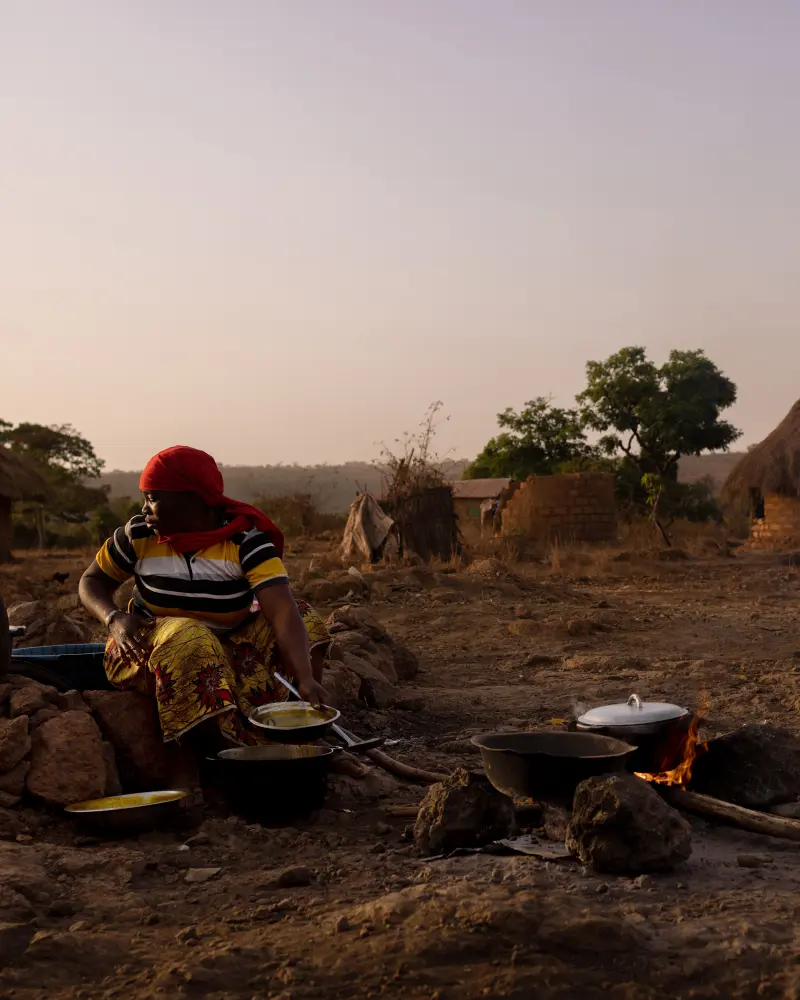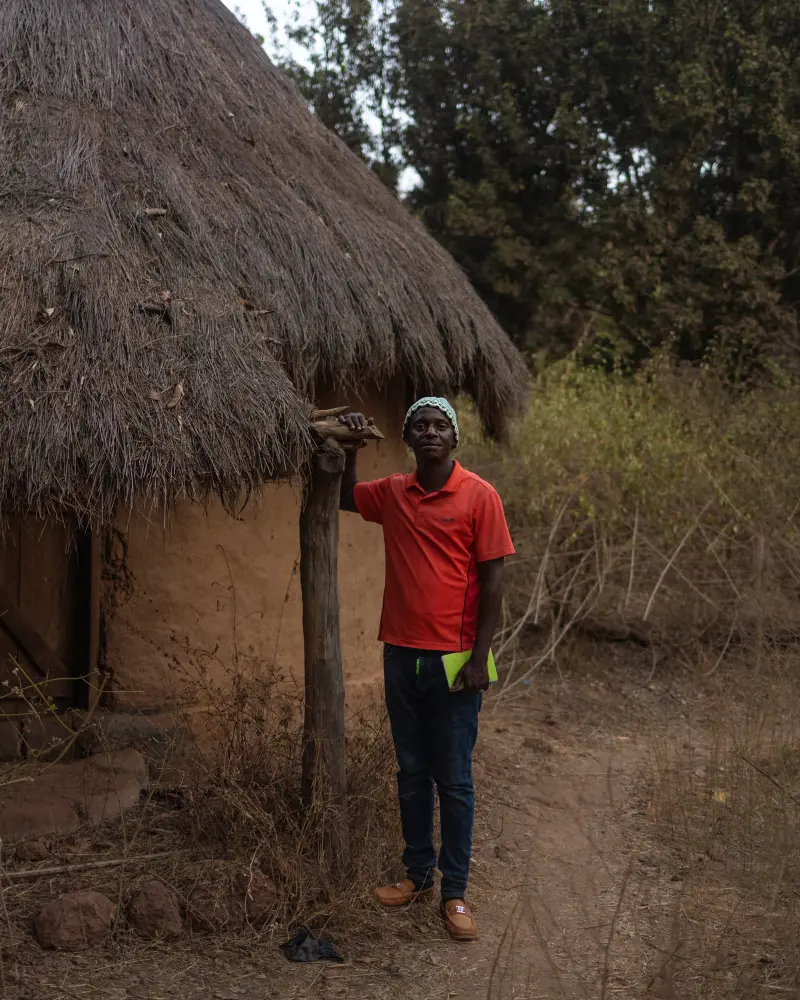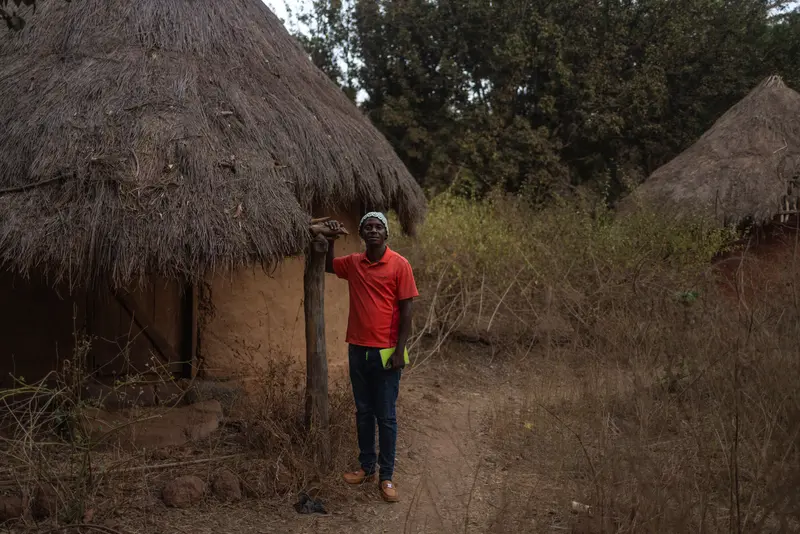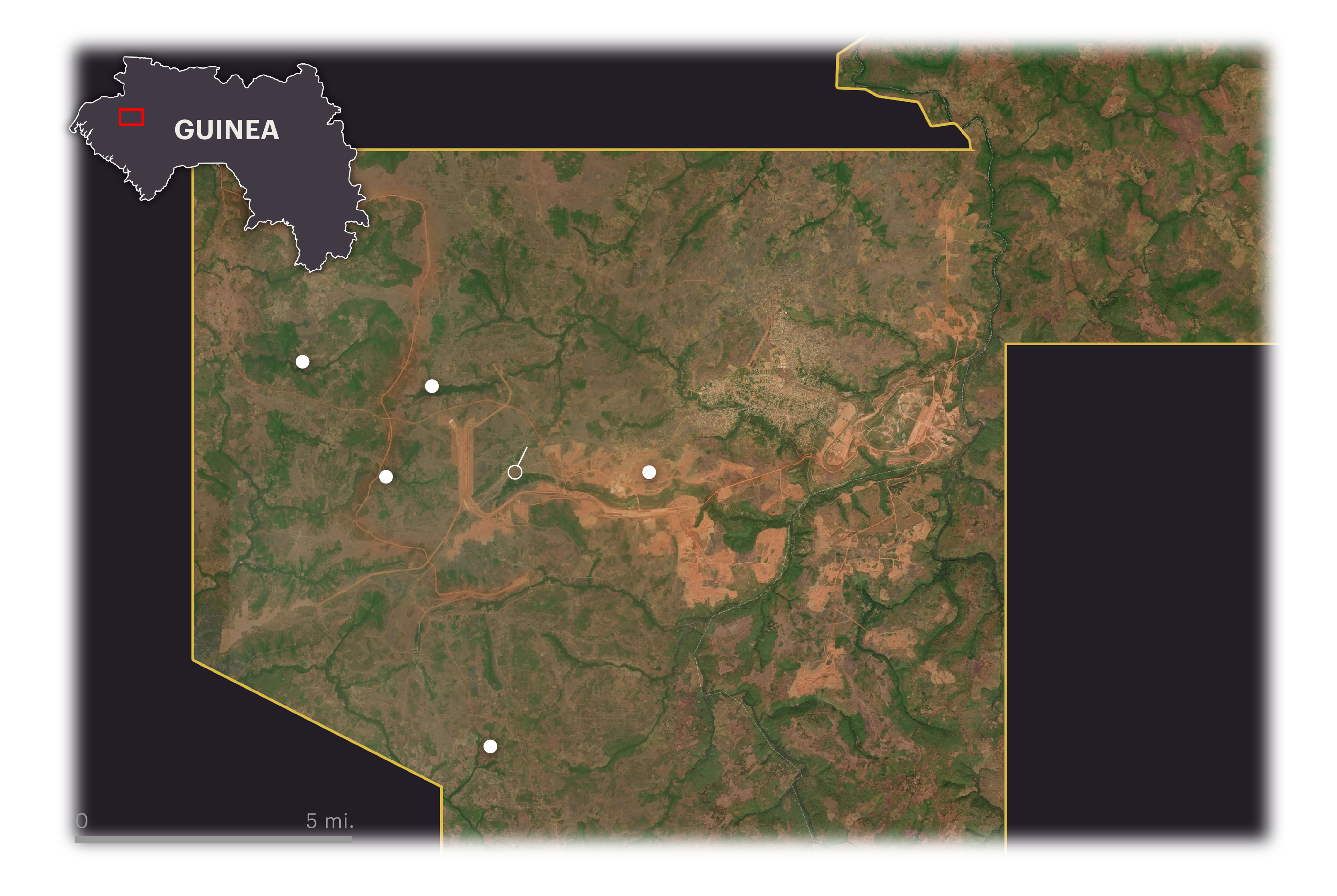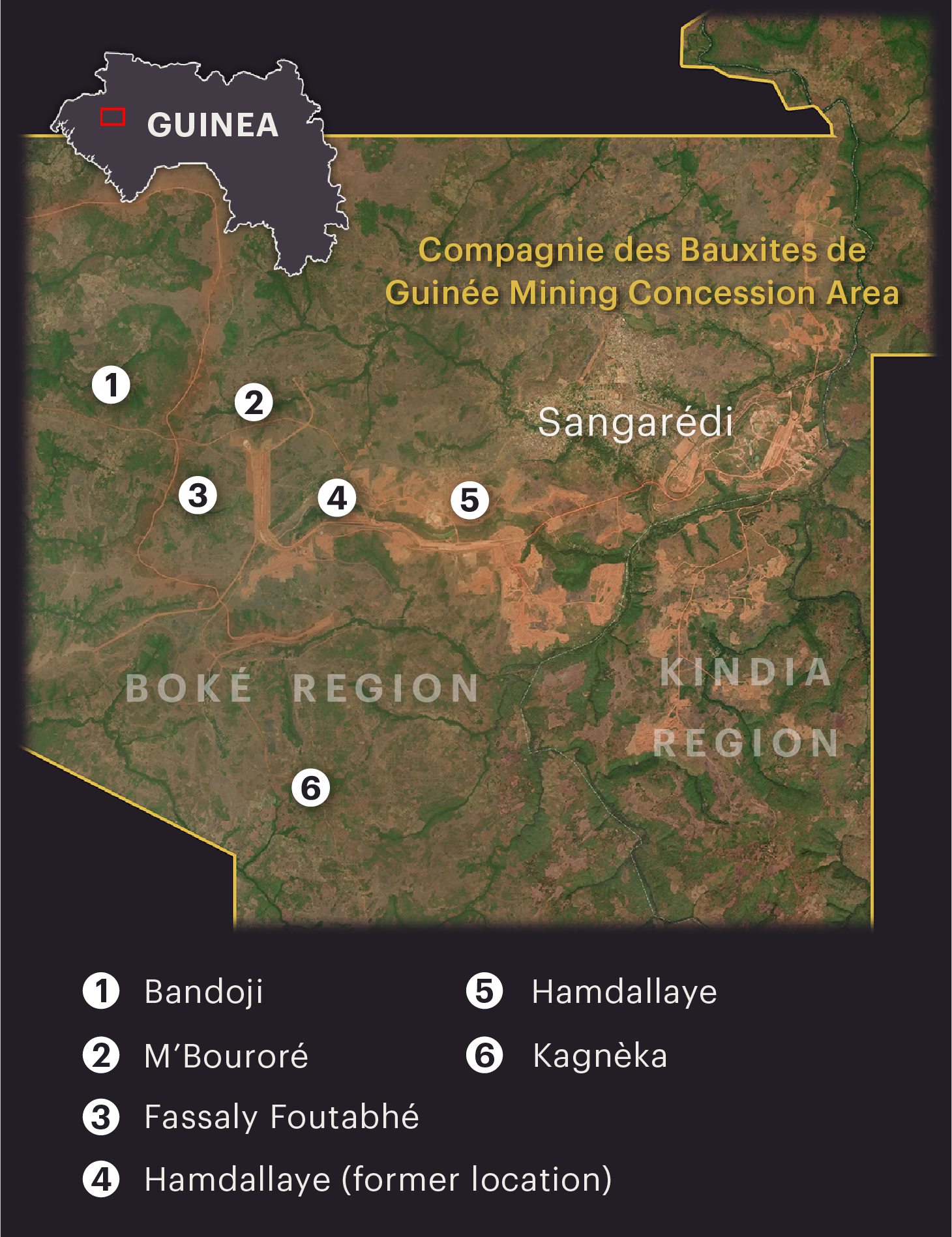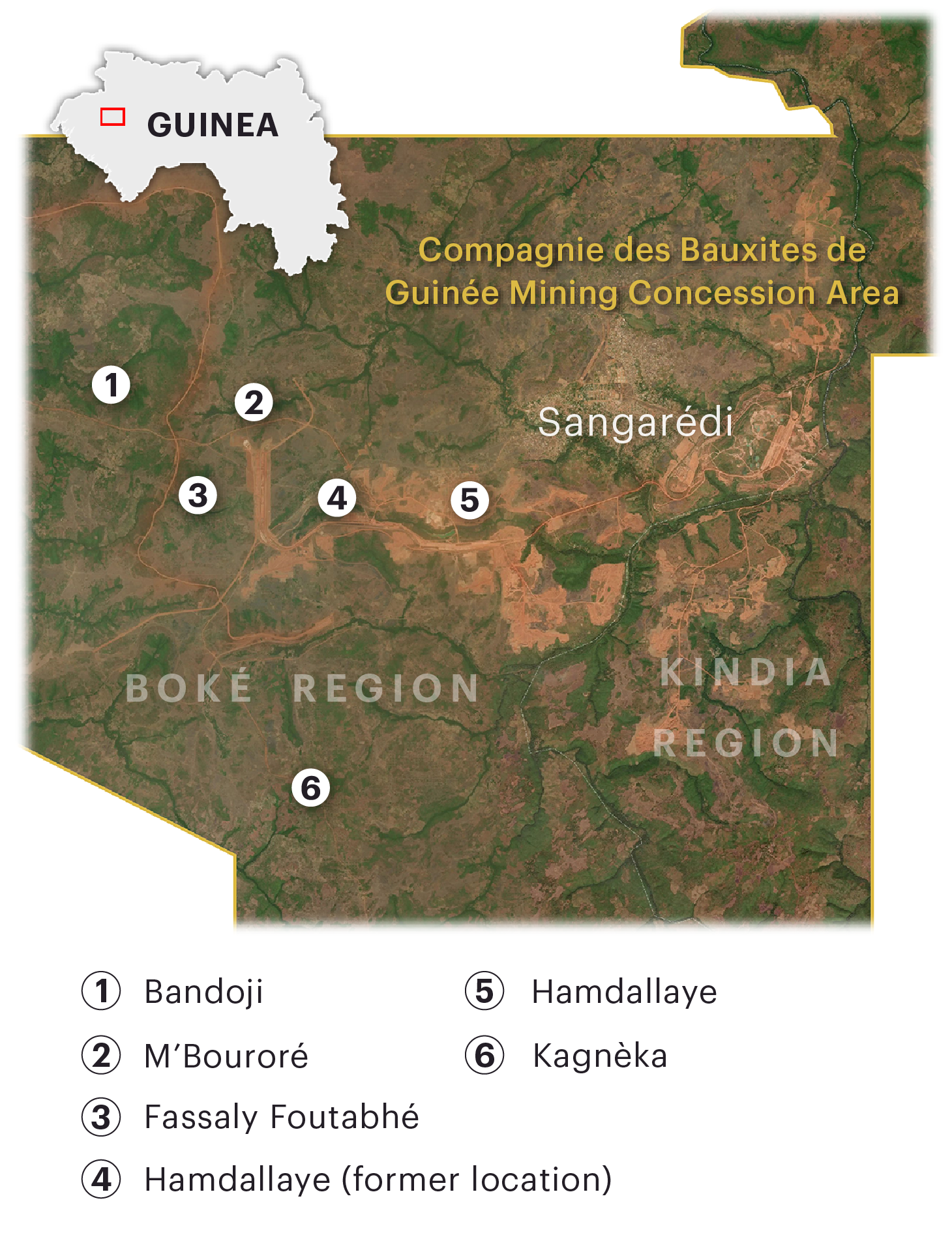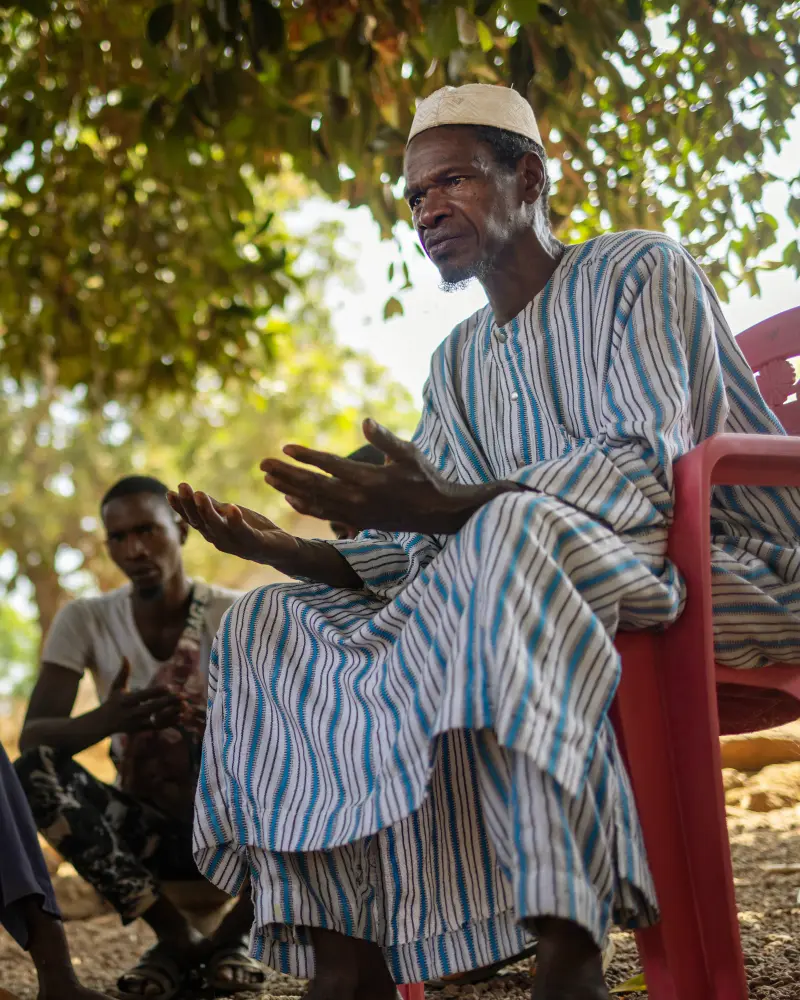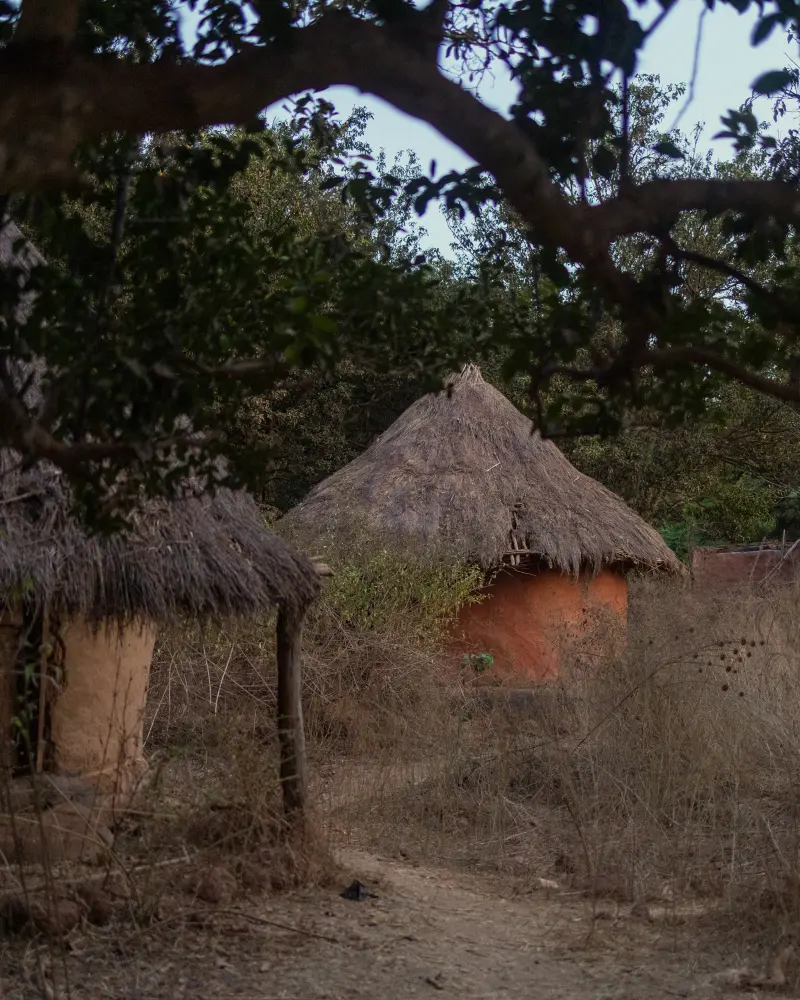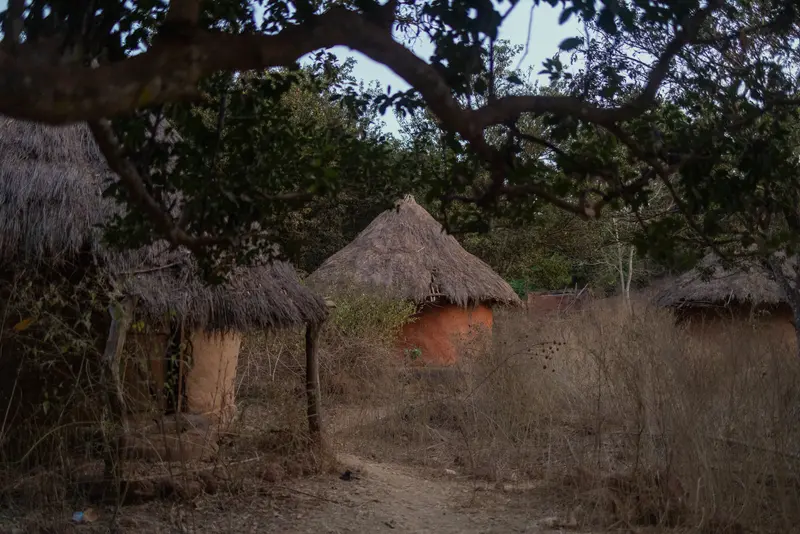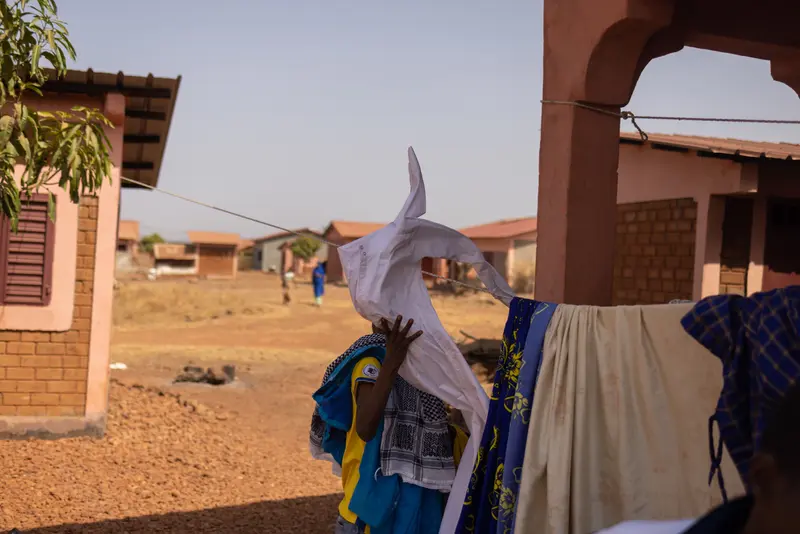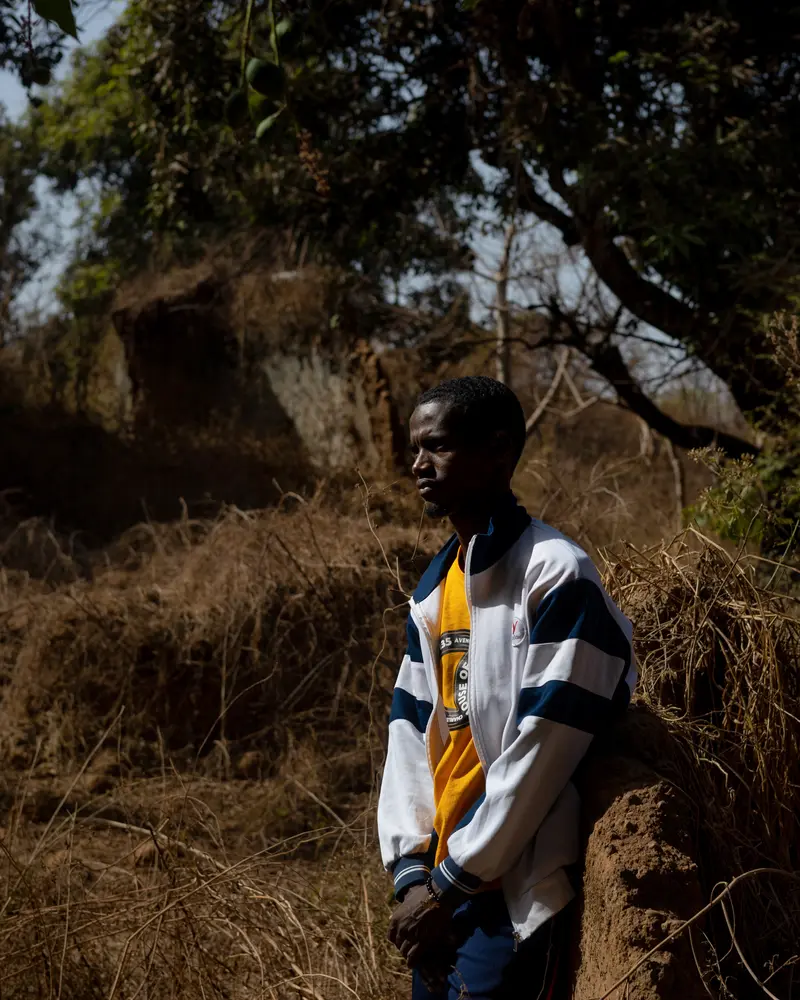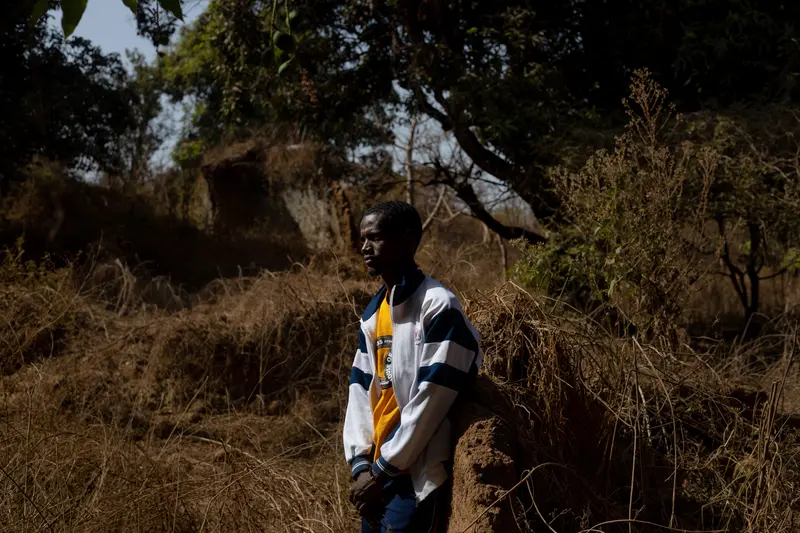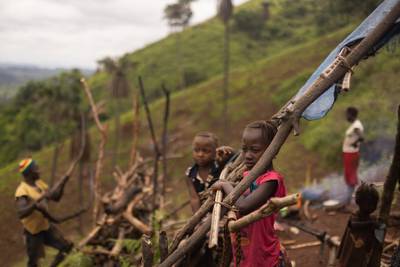
Series: Roots of an Outbreak
How the Next Pandemic Could Start
Part Four
Northwest Guinea
We’re investigating the cause of viruses spilling over from animals to humans — and what can be done to stop it. Read more in the series →
Part Four
Northwest Guinea
We’re investigating the cause of viruses spilling over from animals to humans — and what can be done to stop it.
Read more in the series →
Several times a day, Hassanatou Bah scans for threats along the river’s edge near her village in northwest Guinea. The once-mundane chore of fetching water has become a territorial tug of war with an increasingly frightening foe: chimpanzees. Some days, she’s seen them hurl rocks from trees. Other times, they throw clusters of leaves containing nests of biting weaver ants.
Chimps had long encroached on Kagnèka, her farming community of about 350, but there was a time when residents could beat on gongs to scare them away. That changed about six years ago when a mining expansion drained streams and razed trees, driving the displaced primates into a desperate struggle with the village over food and water. Kagnèka’s crops became an open buffet. And the chimps began guarding the river so aggressively that Bah no longer felt safe bringing her two small children, or washing her clothes on the bank, or even going alone.
One afternoon in February, an enormous nest loomed above — a mound of bent branches where a chimpanzee would have recently slept. Bah used a gourd to scoop water into a bucket to balance on her head, then rushed home with neighbors, past trees stripped bare of bananas.
What Bah and her neighbors didn’t know is that they — and the chimps who now terrorize them — are the accepted collateral damage in a deal brokered by the globally respected World Bank Group, whose priorities include reducing poverty, protecting the environment and preventing the spread of deadly diseases.
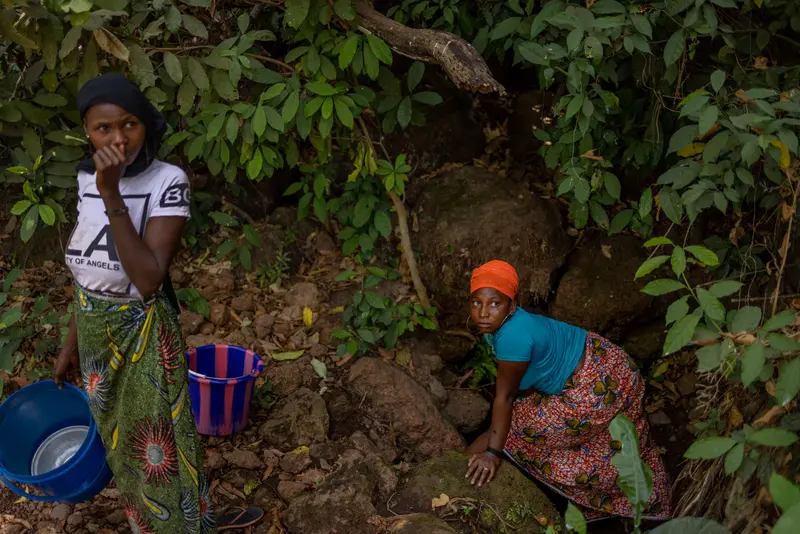
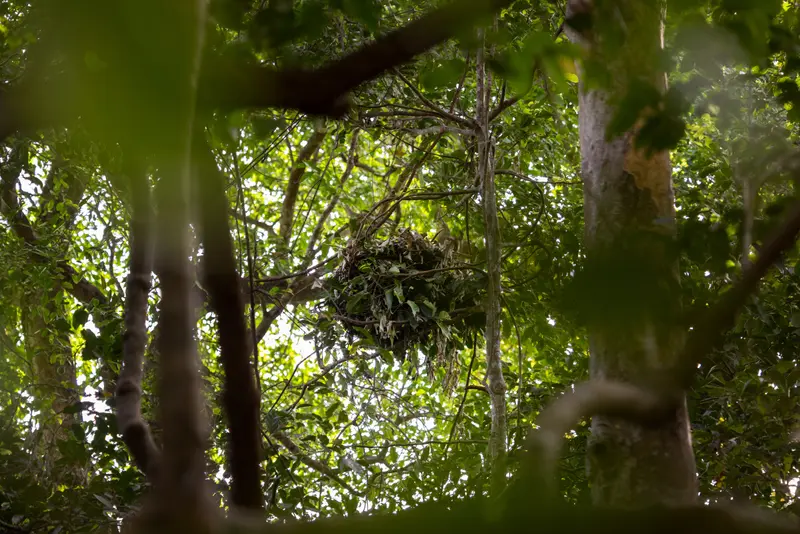
The idea seems noble: In parts of the world rich in natural resources, but struggling economically, the bank sets up arrangements known as biodiversity offsets. Mining or gas companies, for example, can build environmentally ruinous projects in areas even if they are home to endangered species as long as the companies protect the same species elsewhere or take other steps to “compensate” for the ecological damage.
When the World Bank Group funds their operations, it allows the companies to publicly portray themselves as ecologically responsible. In some cases, the name-brand companies that eventually use their products can do so as well.
The World Bank Group has backed such projects for decades; its arm that works with private companies, the International Finance Corporation, has funded at least 19 with biodiversity offsets.
IFC standards are influential and considered the best in the world.
But in practice, ProPublica found, projects brokered by the World Bank Group can fall short of their idealistic goals. The one in Guinea has left a trail of hunger, displaced and broken families, decimated ecosystems and conditions ripe for the spread of deadly contagions.
And the deals themselves sometimes fall apart, with the land used as an offset falling prey to another company or disaster — with few consequences for the company or its lenders.
The deal in Guinea began like many others: Compagnie des Bauxites de Guinée sought funding to expand its mining operation. The company estimated its project would lead to the deaths of up to 83 critically endangered western chimpanzees; if they weren’t killed in the demolition, the displacement would decimate the population over time, as females stopped reproducing due to stress and males injured or killed one another fighting over shrinking territory.

A nearby company that also needed money predicted its mine would result in the loss of twice as many chimps. The IFC helped the companies establish Moyen-Bafing National Park some 200 miles away, where thousands of other chimps already lived. Bolstering and protecting this population, the idea went, would make up for the loss of the others.
But the companies’ consultants underestimated the chimp death toll, primatologist Genevieve Campbell and her colleagues later found in an independent review of the offset. The consultants had assumed some of the chimpanzees near the mines would survive, but the reviewers concluded the development would contribute to the eventual deaths of all the chimpanzees — about 180 to 400.
The offset also faced an existential threat: A regional development authority, not working with the IFC or the mining companies, proposed building a dam that would submerge a swath of it and kill up to 1,500 chimps, in addition to displacing 8,700 people.
Offsets are “mainly an instrument to sanction perpetual destruction,” said Jutta Kill, a researcher and environmental advocate who’s studied conservation programs in the Global South.
[Offsets are] mainly an instrument to sanction perpetual destruction.”
While biodiversity offsets have been used by governments, banks and industries at least 13,000 times across 37 countries, these arrangements have been subjected to far less scrutiny than carbon offsets, which my investigations have found to be profoundly flawed.
I reviewed the literature on the tiny sliver of biodiversity offsets that have been studied and found that, at best, their records are spotty or unproven. At worst, they function as greenwashing for destructive industries.
Those associated with the World Bank Group are among the most controversial, because unlike most others, some enable companies to write off the lives of critically endangered species.
Such trade-offs are increasingly likely as nations race to extract metals from wildlife habitats to meet the global demand for electric cars.
To investigate what gets traded away in a World Bank Group offset, I traveled to five Guinean villages where more than a thousand people live. Mining has long been a nuisance in the Boké region, which is rich in bauxite, the mineral ore that makes aluminum. But residents said the impacts have become noticeably worse since the IFC loaned $200 million to Compagnie des Bauxites de Guinée for its expansion, exacerbating the damage from decades of mining.
Residents described increasing chimpanzee raids, dwindling resources, wells that had run dry and explosions that cracked the foundations of their homes. Their hopes for better-paying jobs were dashed when the mine provided few opportunities. One village was relocated from a shaded grove to a scorching, windswept hilltop, barren as the surface of Mars. Residents said they had little choice in the matter.
The IFC says that its primary consideration when deciding to fund a project is whether it will help alleviate poverty and bolster economies in countries with urgent financial needs, and that it takes great pains to make sure clients use offsets only after taking appropriate steps to minimize impacts on nature. By forcing companies to follow strict standards, the IFC said in a statement, it is “helping embed conservation in economic development.” A spokesperson said that the IFC’s relatively small number of offsets reflects how well it has reduced the need for them.
But some say any stamp of approval by such a revered institution is harmful.
“The World Bank’s involvement helped burnish the profile of a company whose sustainability credentials were otherwise highly suspect,” said Natalie Bugalski, legal and policy director for Inclusive Development International, which advocates for marginalized communities affected by development projects; she added that such an endorsement helps destructive projects attract further funding.

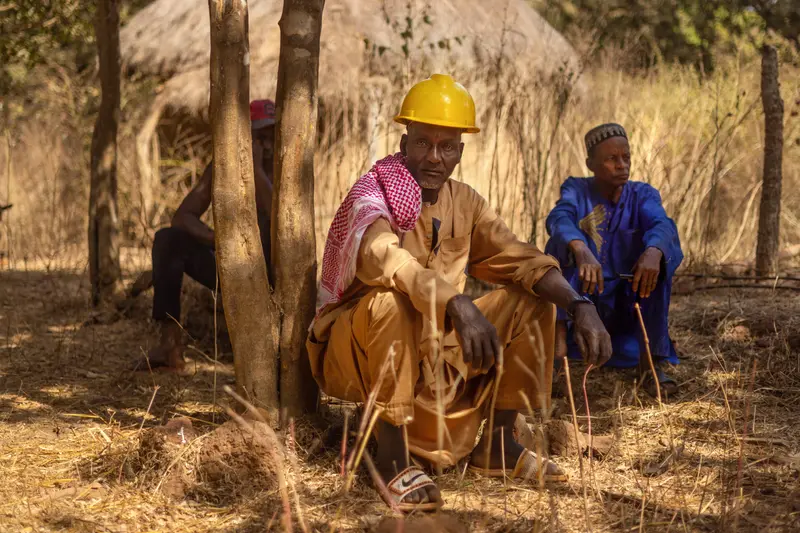
Compagnie des Bauxites de Guinée is 49% owned by the Guinean government and 51% by a consortium of global mining companies including Rio Tinto and Alcoa, with a registration address in Delaware. A spokesperson said it has been engaged in “constructive” dialogue with the villages in collaboration with the IFC, adding that the mediation has been “an opportunity to continue to improve its practices.”
Before the mining deal, Kagnèka had never worried this much about water, said assistant village chief Ousmane Bah. As legend goes, the village’s founder once sacrificed a cow in a religious ceremony to ensure enough water for generations. Now, its children are dehydrated on sweltering, hourlong walks from school. And many of their fathers no longer live with them, forced to migrate more than 30 miles to raise crops and cattle for the families back home.
The mines have “destroyed all of the land” and left residents with little recourse, Bah said. It’s as if “we don’t own anything,” he added. “We don’t even own ourselves.”
A world away from rural Guinea, delegates gathered in Montreal last December for a United Nations conference on biodiversity, where nearly 200 countries hoped to sign an agreement about measures they would take to protect nature. Participants ate salad using biodegradable cutlery and drank seltzer from cans that could have been smelted from Guinean bauxite.
I’d arrived hoping for a crash course on biodiversity offsets, which seemed even more complicated than carbon offsets. Our most basic needs depend on healthy ecosystems: bees to pollinate crops, forests to filter drinking water. It took thousands, if not millions, of years for these complex systems to evolve. And how would you even begin to make up for dead elephants?
I heard no mention of anything dead in Montreal. Instead, conference sessions referencing the concept didn’t even use the word “offset” — a term that has become controversial in recent years — and instead glossed over the fine points with the kind of vague enviro-jargon that permeates high-level gatherings: talk of “raising the bar” via “guidelines” and “building a risk management and disclosure framework.”
It took some interviewing in the months that followed to piece together the rest.
The idea of compensating for ecosystem harm has existed since at least the 1960s, but biodiversity offsets became mainstream in the 1980s when the United States began regulating wetland destruction via the Clean Water Act. If you wanted to rip up 20 acres of wetlands for a shopping mall, the rules said, you now had to preserve or restore at least 20 acres of wetlands elsewhere. Other nations created similar programs, and the concept took off.
The vast majority of offsets used today are created to comply with regulations set by governments; others are voluntarily adopted by corporations or brokered through banks as a condition of funding. The World Bank Group has worked with companies ranging from Chevron and ExxonMobil to wind and solar farms to set up offsets. Many projects often have funding from other banks at the same time, including the two in Guinea.
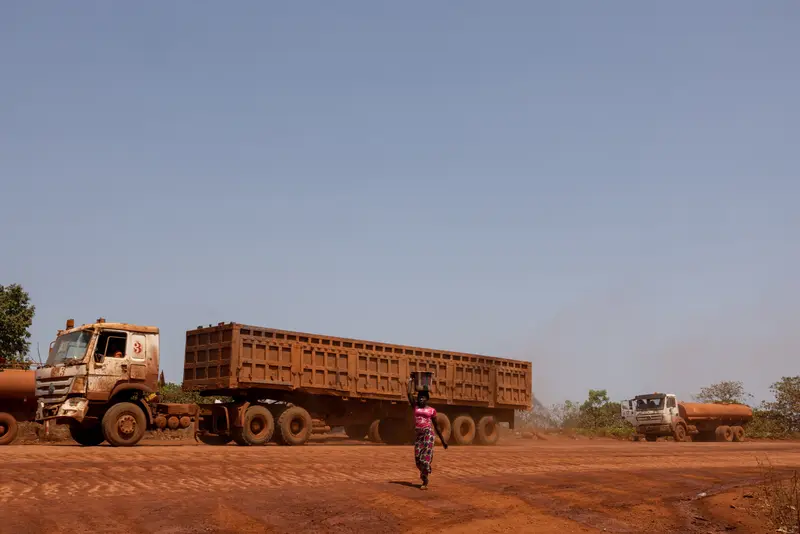
The best biodiversity offsets follow these requirements, experts say: They must be used as a last resort after considering alternatives to ecosystem destruction. They must protect the same type of species or habitat that is being harmed. They should sustain the promised biodiversity for a long time (forever, or at least decades). They should claim credit only for the benefit they create, not what would have happened anyway, such as gains from preexisting conservation efforts. Finally, they should create “no net loss” in biodiversity. In other words, if a natural gas power plant destroys 30 acres of swamp forest where endangered frogs live, the offset could make up for it by restoring at least 30 acres of the same kind of habitat. (Separate rules exist to protect humans affected by these projects, though they’re not consistently enforced.)
The limited number of studies show decidedly mixed outcomes. In 2019, a survey of 32 papers on whether the offset sites recreated the biodiversity that was lost found that one-third of them, all involving wetlands, had some level of success, while none of the forest-based offsets met that goal. Even one of the most notable successes — a high-profile project in Madagascar on track to offset tree loss — has not proven it will make up for other biodiversity harms, scientists concluded last year. “We know embarrassingly little about the effectiveness of offsets,” even though they’ve become an important policy tool, said Julia Jones, a professor of conservation science at Bangor University in Wales who co-authored the Madagascar study.
“The World Bank’s involvement helped burnish the profile of a company whose sustainability credentials were otherwise highly suspect.”
The IFC said that it requires offsets to achieve no net loss and that many of the papers showing mixed results focus on projects “designed under older policy systems that pre-date current IFC and industry good practice.” For offsets that affect the habitats of endangered species or great apes like chimpanzees, the IFC said it almost always requires a “net gain” in biodiversity and the participation of a special team of experts when great apes are involved. It tightened its rules in 2019 to limit projects that affect great apes’ habitats; it has, however, since funded a hydroelectric dam in Gabon that threatens gorillas and endangered central chimpanzees. The project developer said the impact on those animals would be “negligible,” but the outside experts who reviewed the project (including Campbell) concluded there’s not enough data to tell how many great apes will be affected.
Many critics say offsets remain a “get out of jail free card” for ecosystem damage. Developers can break ground long before anyone can tell whether the corresponding offset will succeed. Companies don’t often invest enough to secure long-term results; the mining companies in Guinea, for example, will fund the national park for 20 years, but chimps can live twice as long. And there are few resources to follow up and ensure the offset project actually works.
One recent failure is all too familiar: An IFC-funded dam in Uganda struggled for years to support its offset, which included protecting a large stretch of forest and several islands along the Victoria Nile River. It deteriorated further in 2019 when a second dam flooded part of the offset, requiring a new offset to offset the offset.
A World Bank panel later concluded that “mitigating the partial loss of one offset by creating another erodes the underlying principles of offsetting.” Yet this is the same remedy the World Bank suggested for the developer that plans to inundate part of the park that was supposed to offset the mines’ destruction of the chimp habitat. A spokesperson for the IFC said the institution has no power to overrule what the Guinean government decides to support and approve.

The companies that funded the park insist their offset would still count if the dam floods part of it. Compagnie des Bauxites de Guinée said there would be enough chimpanzees left there to “largely cover” the loss of chimps near the mines. Guinea Alumina Corporation, the second company that worked with the IFC to establish the park, said the dam could be “an opportunity” for biodiversity, as it “would increase the availability of water in and around the park” and bring in additional conservation funding from the dam operator.
The company said it has taken steps to help chimps near its mine, planting trees and maintaining the aquifers near the forests where the animals prefer to live. As to the finding that the offset undercounted the mines’ toll on those chimps, the company said that the estimate came from a yearslong survey, that all such efforts contain “a degree of uncertainty” and that “the goal is to reduce this uncertainty over time through repetition and peer review.”
But Campbell, the primatologist who took part in the estimate for the offset project, said the task involved as much art as science. “Offsets are a bit crap” when you’re dealing with chimpanzees and other great apes, she said. None of the handful of ongoing great ape offsets around the world have proven their success, she added.
And the math fails to account for the ethical questions of losing entire communities of complex and intelligent animals, said Campbell, who has consulted for both mining companies in the past. As the closest relative to humans, chimpanzees share more than 98% of our DNA. Chimpanzees take care of their young for years, and mothers have been observed carrying their infants for days after their deaths. Each community has its own culture. Some groups fish for algae; others crack nuts using self-made tools. Once the chimps in a community die off, those traits are lost forever.
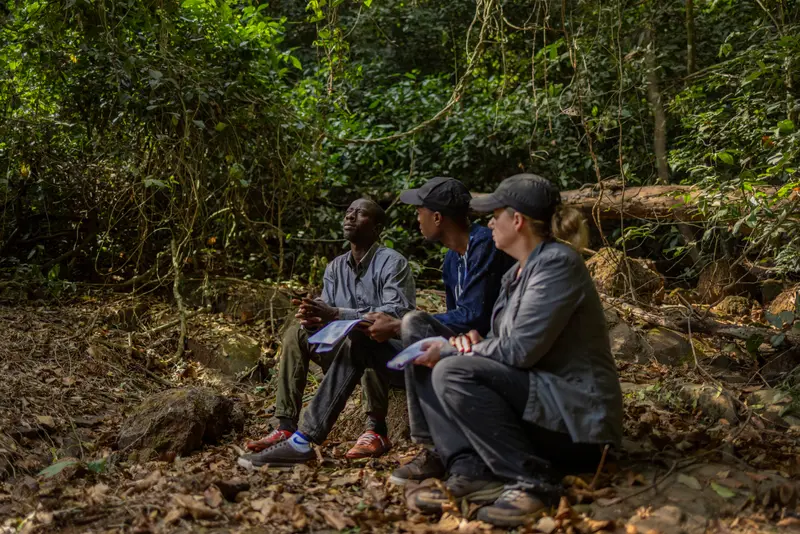

Offsets “should never be an excuse to legitimize” harm to critically endangered species, which are “about as vulnerable as you can get,” said Sophus zu Ermgassen, a University of Oxford researcher who advises the British government on biodiversity offsetting. Doing so clearly violates best practices, but such offsets may still make sense if you can make a really good case that the development alleviates extreme poverty, he said.
“It is better to have something than to have nothing” was a sentiment I heard again and again. Several experts — including scientists who’d criticized offsets — said they are a pragmatic tool given that it’s impossible to avoid all impact on nature from development projects, many of which would happen anyway. They said the rules for best practices are constantly improving and written by people with good intentions.
For the villages near areas mined by Compagnie des Bauxites de Guinée, biodiversity has always meant much more than something to be balanced on spreadsheets. Generations of farmers relied on the land and surrounding forest, hunting, fishing and collecting water from the streams. Families planted cassava and rice and raised cattle. Halimatou Barry recalled how it didn’t take much to keep her children fed during mango season, when they stuffed themselves with fruit. Bah Mamadou Lamarana said residents tracked the appearance of one type of bird that signaled the start of planting season and another whose song indicated it was time to harvest.
When people got sick, they turned to the forest as their main pharmacy, collecting bantora for scabies; garba for pain relief after childbirth; and kinkeliba for an herbal tea that treats insomnia. The farmers in his village cleared trees to plant crops, but they took care not to overexploit the land, said Manga Kounsa. When one of his neighbors began selling charcoal to survive, he said, the community gave him farmland so he could stop logging. Once you remove the forests and animals, the communities become villages in name only, Kounsa said. “It doesn’t have the characteristics of a village anymore.”
All of the villages I visited were within a few miles of one another, accessible via dirt roads and occasionally only on foot.
Three of them — Kagnèka, Bandoji and M’Bouroré — are being plundered by displaced chimpanzees.
GUINEA
Compagnie des Bauxites de
Guinée Mining Concession Area
Bandoji
M’Bouroré
Sangarédi
Hamdallaye
(former location)
Hamdallaye
Fassaly
Foutabhé
BOKÉ REGION
KINDIA
REGION
Kagnèka
Biodiversity surveys confirmed the presence of chimps near these villages before the mining expansion. They’d always lived close to humans, foraging for fruit and insects among a mosaic of woodlands, savannas, farms and the riverine forests where they tend to nest. Crops can act as a backup food option when there’s little wild fruit available, experts said. But as their habitat is chopped up by the mines, or noisy machinery drives them away, farms and orchards become increasingly attractive and essential to their survival. The fear and stress of being kicked out of their own territory can make chimpanzees more aggressive.
The chimps that visit Bandoji are smart, residents said. They might show up in the morning at one end of the village to raid their crops, and if they see people there, the chimps will go to the other end in the evening. Farmers said they’ve had to cut down trees to make more space for crops, in part because they now have to share their harvest with the chimpanzees.
Mamadou Hocha Diallo, a hunter in M’Bouroré, wishes everything would go back to the way it was when the chimps had a large enough forest that they mostly stayed there. Now, they show up in the village every two or three days, just long enough for the next batch of cashews to ripen. “We all have to fight for the available food,” he said.
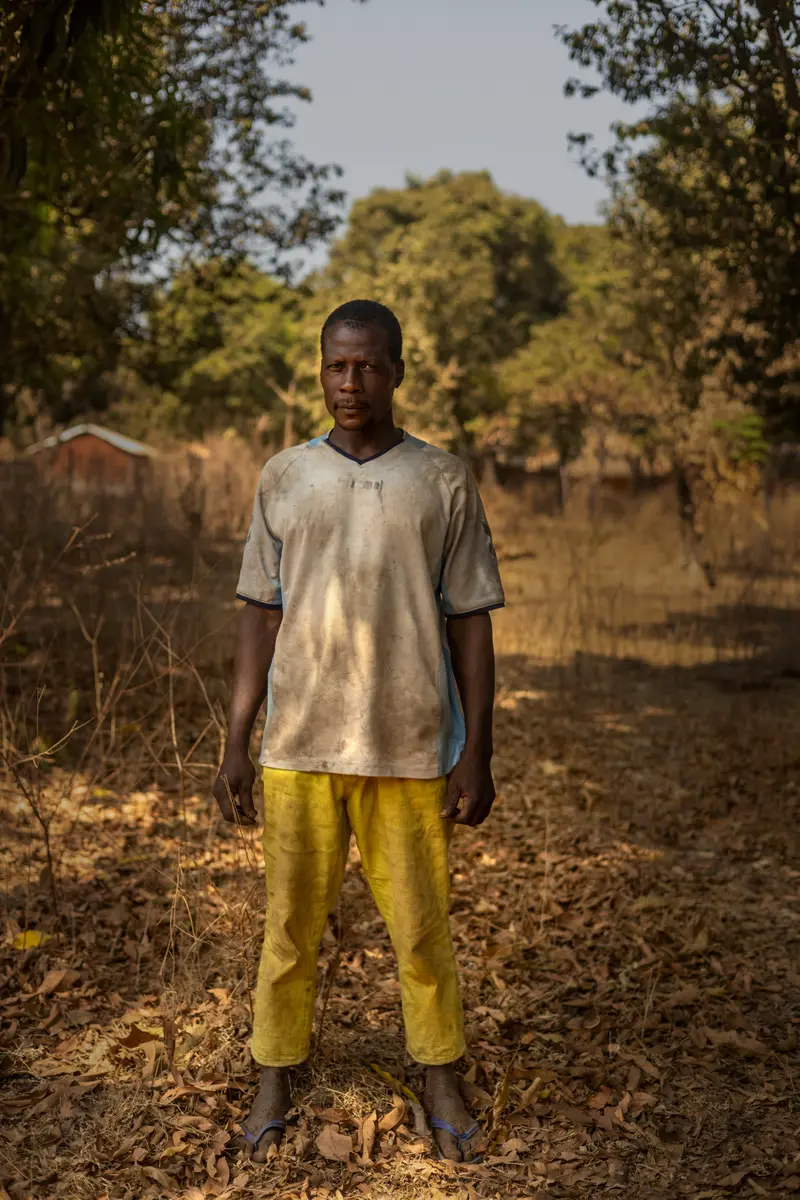
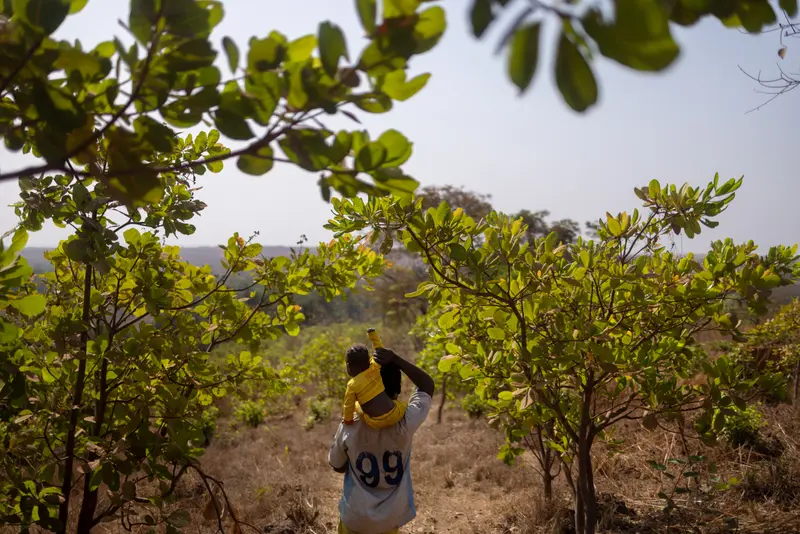
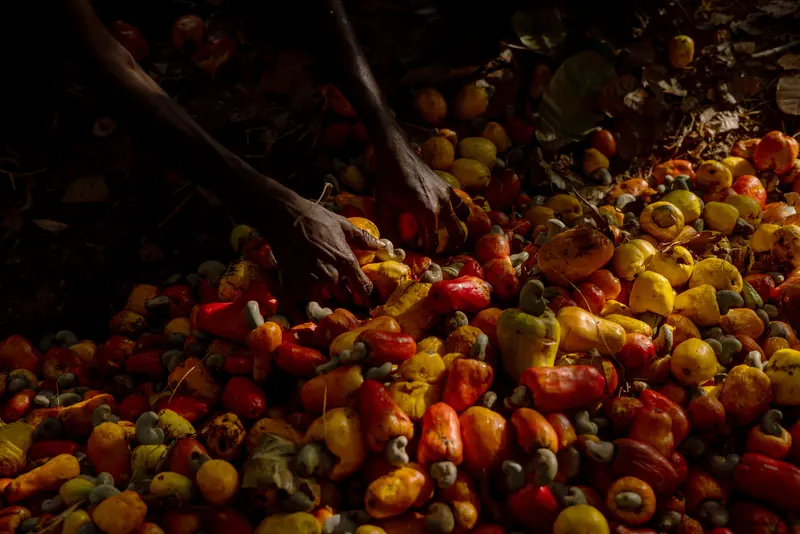
This new collision between people and chimps can spark outbreaks of deadly viruses as they jump from wildlife to humans in an event known as spillover. It happened in 2013 in the Guinean village of Meliandou, where scientists believe the world’s worst outbreak of Ebola began after a toddler played near a tree full of bats.
The majority of emerging infectious diseases start with these fateful moments.
“Anytime you’re creating unnatural interactions between species and resources are becoming limited, you’re potentially concentrating viral load in the environment,” said Sarah Olson, an epidemiologist at the Wildlife Conservation Society.
Chimpanzees can be infected with coronaviruses and filoviruses including Ebola. The same diseases circulate in other local wildlife, including bats and smaller monkeys. If chimpanzees are wandering more frequently into villages, then other animals may be doing that too, even if it’s less noticeable, said Laura Bloomfield, a postdoctoral fellow at the University of Vermont who studies infectious diseases and environmental change.
The biggest spillover risk comes from direct contact, of humans touching the blood, saliva or feces of an infected animal. Because many of the residents consider it taboo to hunt or kill chimpanzees, they are somewhat protected. The spokesperson for Compagnie des Bauxites de Guinée said the company monitors chimpanzees with a network of cameras and drones and officials haven’t seen or heard “any case of direct conflict” between chimpanzees and humans.
But they’re still vulnerable to risks from indirect contact, Olson said. If someone eats fruit that was recently contaminated by the saliva of a sick chimpanzee, for instance, that disease could jump into the human population. On a recent morning, in a ransacked orchard, Diallo’s young daughter Mariama played on the ground among dropped cashew fruits.
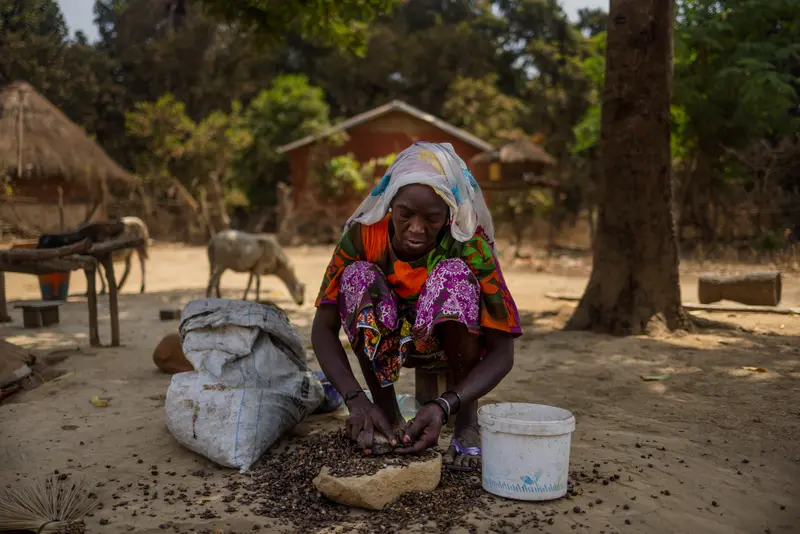
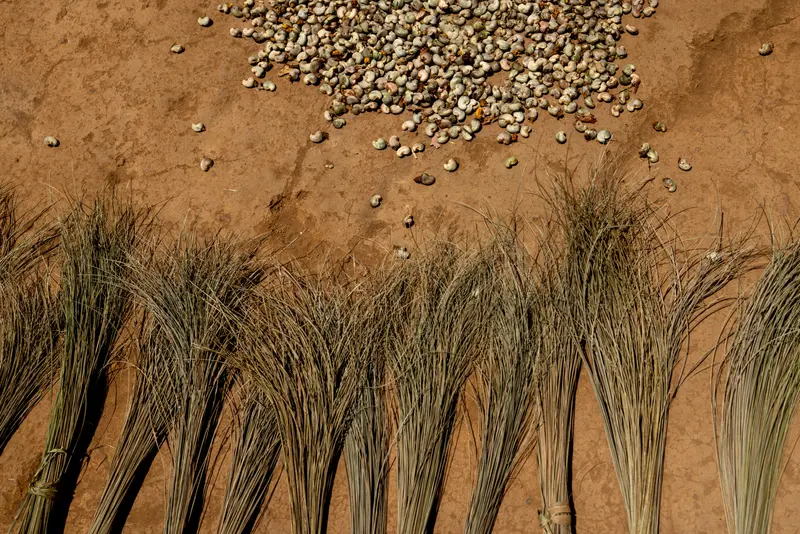
Spillover risk is a numbers game, Bloomfield said. The more interactions there are, the greater the chance that an animal will transmit a particular disease to a human, and the greater the risk that person will get sick and pass it on to their neighbors. The best way to reduce risk “is not having overlapping habitats,” she said.
The World Bank Group recently warned of this very problem, yet the IFC’s standards were last updated in 2012 and don’t account for the wealth of virus research conducted in the wake of the West African Ebola epidemic.
The IFC spokesperson said both mining companies that created the offset have policies that prevent staff from hunting chimpanzees and that the institution “is increasingly encouraging our clients to include pathogen transfer risks in protocols for encounters with great apes on project sites.”
But the IFC standards include no protections against spillover risk.
In every village I visited, residents gathered in a circle, next to houses with slanted thatched roofs, and talked of promises broken.
The World Bank Group was familiar with an important context when it decided to back the mine expansion in Guinea, which has one of the highest poverty rates in the world: Though mines had long powered the economy, local residents — those impacted the most by the industry — stood to benefit the least. The IFC was supposed to guard against any further harm or exploitation. In 2016, an IFC executive announced the expansion would create jobs. And IFC standards required communities to be compensated for lost agricultural land with property “of equal or greater value” or cash payments “at full replacement cost.”
Instead, out of five villages, I heard of only one person who’d gotten a job in the mines. And each community spoke of lands seized or crops lost with zero or inadequate payment, forcing residents to find other ways to support themselves, some selling their livestock to survive.
I spent an afternoon in Fassaly Foutabhé, a village of 75 that was relocated a few hundred feet across a stream to make way for future mining activity. Kounsa, a young, soft-spoken attorney who grew up there, said he returned after graduating from law school to advocate for his community amid the expansion. He said his neighbors were not reimbursed for the medicinal plants they lost or for the reduced yields of their crops.
In the small portion of farmland that remains in the village’s control, the cashews are stunted by endless dust that blows in from the nearby mine. The red powder coats the trees, making it look like the leaves have rusted; it was so thick that Kounsa wore a mask.
Unlike the villages frequented by chimps, there is nothing left to scavenge here. Leaders told me the community will be forced to disperse unless they can obtain funds to move to a place with ample farmland and clean water. “Our village is very dear to us,” they wrote last year in a letter to Compagnie des Bauxites de Guinée and the government. “But our lives are worth even more.”
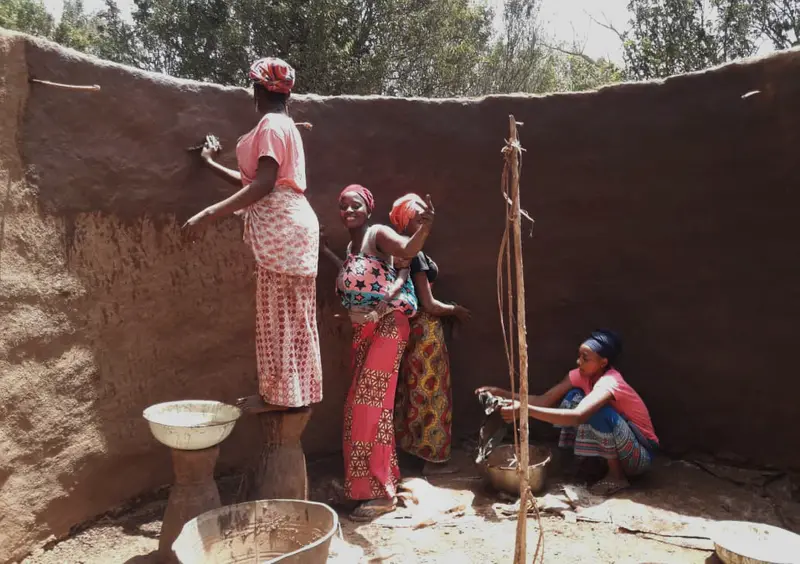
The stream began to run dry in 2017, Kounsa said. The fish have disappeared. The mines use water to control dust on roads, and the influx of people moving to the nearby city of Sangarédi in search of mining-related jobs places additional strain on water sources. Bob Adam, an Australian mining consultant who’s worked in Guinea, said bauxite deposits act as a kind of sponge that stores water underground, and their removal can drain local streams. Before they broke ground, the environmental disclosures for both mines acknowledged that there would be potential harm to local streams, as well as air pollution and noise.
Vibrations from dynamite used to extract bauxite have cracked the walls of people’s homes. The explosions keep them up at night; I heard one of these blasts during a tour of Kagnèka, a loud, echoing boom like a cannon.
It’s as if we’ve been “colonized,” Diallo said.
Many of these grievances are documented in a letter that 13 villages filed with the IFC in 2019. Similar details emerged from a 2018 report from Human Rights Watch.
Several organizations helped residents write the letter, including Centre du Commerce International pour le Développement, a Guinean group that advocates for community and women’s rights. Bamba Ibrahima Kalil, the group’s director of programs, said the effort has led to limited gains. The company has agreed to stop blasting within 1 kilometer of villages and installed dozens of water taps in communities. “It’s not enough,” Kalil said, adding that his organization is fighting for the restoration of clean water in local rivers and streams.
The spokesperson for the mining company said it has “always ensured that all environmental and social impacts” from its projects “are fully compensated in accordance with applicable standards including those of IFC.”
“Our village is very dear to us. But our lives are worth even more.”
Adam, the mining consultant, said the industry is improving. Compagnie des Bauxites de Guinée is transitioning to surface miners, machines that produce less dust and noise than the traditional drill-and-blast method, he said; the company said it runs a program to repair and build water wells in 50 villages throughout its mining area.
Kalil said the IFC needs to take responsibility for the company’s overall track record, not just the post-2016 expansion. When the IFC agreed to fund the mine, he said, it essentially endorsed the company’s legacy. That includes a long-running dispute with the village of Hamdallaye, whose 600 residents were relocated in 2020.
IFC standards require companies to offer residents different options for resettlement.
Hamdallaye residents told me that didn’t happen. Their complaint letter describes how they’ve been fighting the company’s intentions to relocate them since 2007, and that even though some residents signed agreements in 2018, they didn’t understand what the documents meant.
The company disputed the accusation that they forced the move. “The resettlement of Hamdallaye village was done following a participatory and inclusive process” that meets IFC standards, a spokesperson said, adding that decisions were made by a committee that included men, women and young residents from the village and that families were compensated for crops and agricultural land.
The company moved the community to a barren hilltop. I visited to find pink brick houses with metal roofs baking in temperatures that hover over 100 degrees. “They brought us here and left us under the sun to dry like clothes,” Halimatou Barry said.
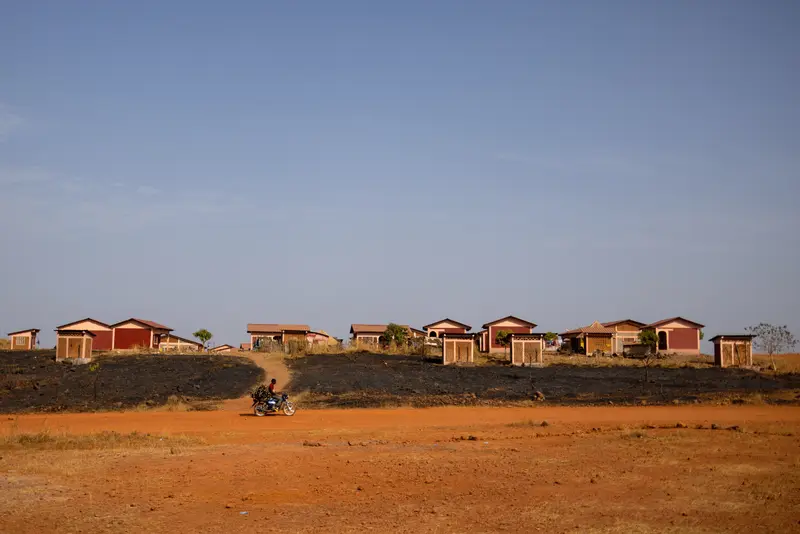
Their former homes had thatched roofs that dispersed the heat and were sheltered by fruit trees, residents said. Bah Mamadou Lamarana, an activist and community leader, reminisced about a time when families could step outside to hunt and fish. The only wildlife in the new village, he said, are mosquitoes.
The only vegetation here is brittle tufts of grass and a few trees that offer about as much shade as a potted plant. Mamadou Maoudoh Bah said the company had promised to plant thousands of trees, but it did little to cool the air. He pointed to one of the saplings — a spindly thing about 5 feet tall, small enough to count every leaf.
Even Adam, the mining consultant, was shocked by where Hamdallaye’s residents ended up. “I don’t think it’s a suitable site for a relocation,” he said.
As I talked to Bah in the shade of a house, flames erupted a block away. The fire tore through a field, black smoke rising several stories high. I later heard it had been started by a dropped cigarette. Residents said these wildfires occur nearly twice a month during the dry season.
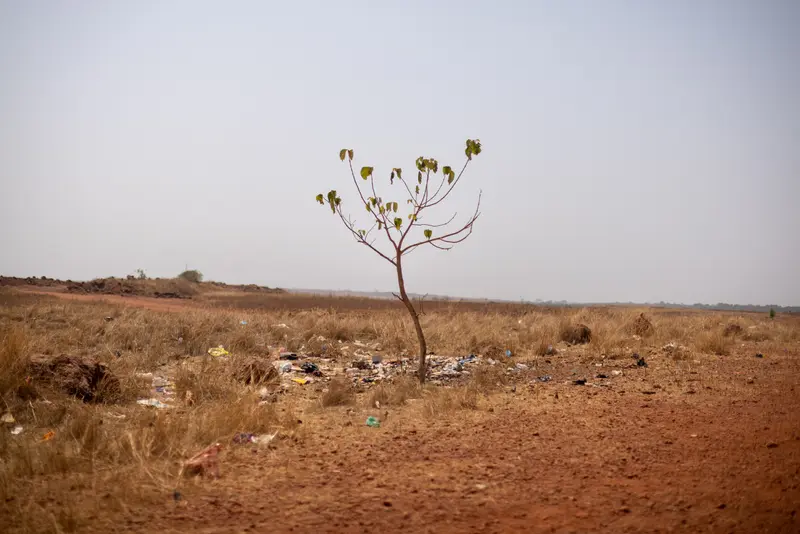
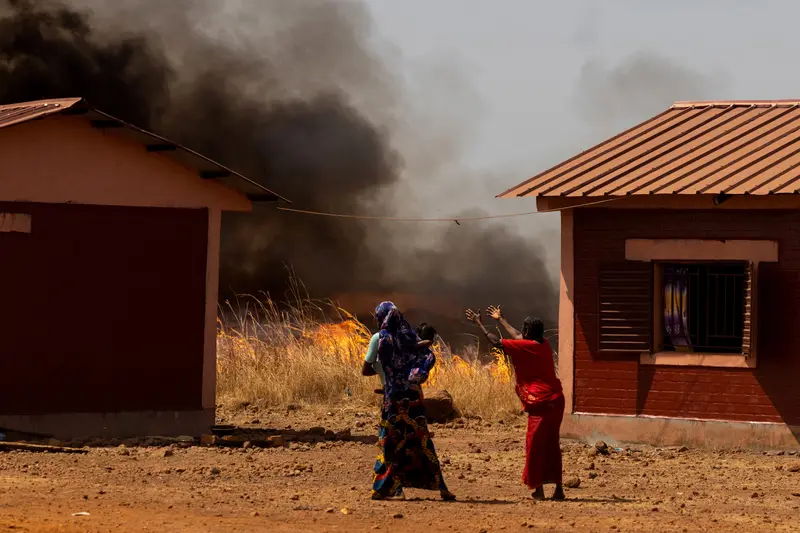
The company has rehabilitated more than 1,000 hectares, or roughly 2,500 acres, of mining land since 2017, its spokesperson said, establishing a tree nursery with 500,000 seedlings and hiring more than 100 residents each year to plant and monitor the trees.
“We acknowledge that communities care about land use and feel that their new land should have been fully rehabilitated before their move,” the spokesperson said. “Hamdallaye still has access to certain historical prime agricultural land, where their usual crops and fruit trees are.”
Just 2 miles away, the old village sat empty, a few crumbling walls poking through the ground like ancient ruins. The air felt 20 degrees cooler. Bah stood before the remains of his mother’s house, next to the tree he’d planted as a teenager, its branches dripping with green mangoes. When the fruit ripened each spring, he said, his family would boil the pulp and mix it with palm oil to make a sauce for fish stew.
Bah said he rarely returns here. The reminder is too painful.
More from Roots of an Outbreak
View All
Do You Have a Tip for ProPublica? Help Us Do Journalism.
Got a story we should hear? Are you down to be a background source on a story about your community, your schools or your workplace? Get in touch.
June 15, 2023: This story originally misstated the type of chimpanzee threatened by a hydroelectric dam in Gabon. It is the central chimpanzee, not the western chimpanzee.
Special thanks to our driver, Alpha Amadou Bah.
Design and development by Anna Donlan. Photo editing by Peter DiCampo.
